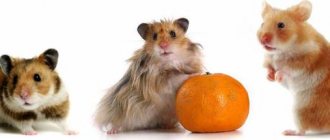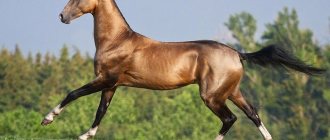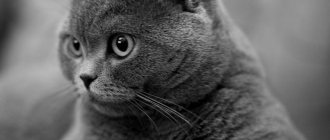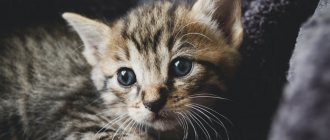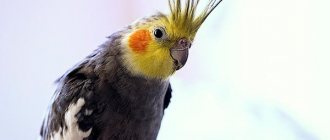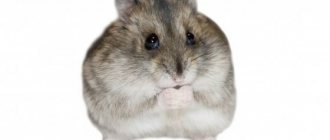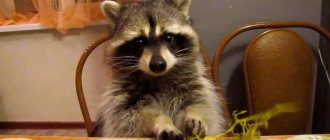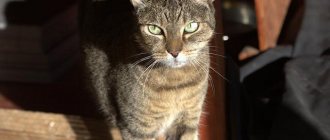Gophers
Gophers
Terrestrial habitats are best developed by rodents. Accordingly, many variants of the external appearance of animals have arisen, which are combined into troupes based on common characteristics. Representatives of the squirrel family living on the ground - gophers and marmots - have formed a characteristic life form: it is designated by the general concept of “gophers”.
These animals weigh from hundreds of grams to several kilograms (the largest species of marmots weigh up to 8 kg); They live in arid steppes, semi-deserts or mountains of Europe, Asia and America. They have a short tail and small rounded ears.
The color of the fur is usually yellowish-gray or reddish with spots or streaks, camouflaging rodents against the background of sun-bleached grass. The elongated body is well adapted to life in burrows. Gophers live in colonies, and marmots live in families. The period of their activity is limited to the warm season; During the winter, animals hibernate, using up their accumulated fat reserves. The gophers' menu is dominated by plant foods.
Rodents
Various species of rodents representing various suborders (from left to right, top to bottom): spiny-tailed (Anomaluromorpha), mouse-shaped (Myomorpha), squirrel-shaped (Sciuromorpha), beaver (Castorimorpha), porcupine (Hystricomorpha)
The order Rodentia is the largest and most diverse group of mammals. These include:
- proteins,
- jerboas,
- sony,
- marmots,
- mole rats,
- gophers,
- gerbils,
- hamsters,
- muskrats,
- nutria,
- beavers,
- chinchillas,
- porcupines.
Rats in the Indian temple of Sri Karni Mata
A characteristic feature of rodents, as well as lagomorphs, is the constant growth of the front incisor teeth, which are constantly ground down.
Rat
The steppe marmot lives in Russia and Ukraine - a commercial animal in the past, which is now protected by law. This is the largest rodent in our area, which settles in colonies in burrows in the steppe zone.
Marmot
Mole rats, like moles, lead an underground lifestyle. But unlike moles, they feed on plant roots (moles eat insects and worms), their eyes are completely covered by skin, and they dig the ground with their incisors, not their paws. For the winter, mole rats make large reserves of plant food. Since they can only inhabit virgin lands, mole rats began to disappear in some parts of their range, for example, in Ukraine.
Common mole rat
Beavers are first-class builders. Thanks to their powerful incisors, they can chew through even thick tree trunks in one night. Fallen trees are used to build dams, and the bark and branches are used for food. Beavers need dams to maintain a constant water level in a reservoir.
Beaver
The muskrat was acclimatized in Russia and other European countries in the 1950s. Its homeland is North America. This valuable fur-bearing animal leads a semi-aquatic lifestyle, building “houses” up to a meter high on the water, which are feeding places. The muskrat lives in burrows that it digs in the coastal strip.
Muskrat (musk rat)
Chinchilla is a very valuable fur-bearing animal. Its homeland is South America. Nowadays, these rodents are readily kept as pets.
Chinchillas
The hamster family includes quite a variety of rodents. Many of them are characterized by specific organs, for example, cheek pouches, as well as the ability to form special storehouses for grain in their burrows, which can contain up to 16 kg of seeds.
Common hamster
The porcupine is a very peculiar representative of rodents. Inhabits Asia and Africa. Long, sharp needles serve to protect and scare away enemies; even a predator such as a tiger can suffer from them.
Porcupine
All articles
Hamsters
Hamster
Another group of terrestrial rodents, the “hamsters”, includes short-tailed, blunt-faced, small omnivorous animals. All of them are inhabitants of flat or foothill steppes and deserts, are sedentary, live alone, and lead a burrowing or semi-burrowing nocturnal lifestyle. In winter, “hamsters” feed on supplies made in the fall, sometimes falling into shallow hibernation. Typical representatives of this life form - the Western Asian, or Syrian, hamster and the Djungarian hamster - are often kept in captivity.
Interesting: Why does a chameleon change color?
Voles
Vole mouse
Another terrestrial group - "voles" - includes representatives of the hamster family: forest, gray and thorn voles, lemmings, cotton hamsters, etc. These are small, short-tailed animals with small ears hidden in the fur and small eyes.
Their skin is gray or brownish in color. In summer, “voles” feed mainly on leaves and shoots, and in winter on more nutritious seeds and fruits. These rodents are active throughout the year, and make abundant reserves for the winter. Voles are burrowing animals. Some of their species living in open spaces settle in colonies. They are found in a wide variety of conditions - from lowland forests to tundra and mountain alpine meadows.
Human interaction
Rodents have accompanied humans throughout human history. Some of them served a person as a source of food, clothing and other materials, others destroyed his supplies and served as a carrier of diseases. Some species (house mouse, pasyuk) have become true synanthropes, spreading along with humans, using their homes and vehicles.
Pets
Many species of rodents are kept as pets. Common domestic species include mice, rats, guinea pigs, squirrels, and degus. The chinchilla is an exotic pet that requires a lot of care.
Source of fur
Many rodents have soft, pleasant-to-touch fur, but only a few of them (nutria, muskrats, squirrels, chinchillas) are commercially hunted. The Siberian chipmunk is of minor commercial importance.
In the research field
Mice, rats and guinea pigs serve as the object of scientific research experiments. The high rate of reproduction and ease of maintenance made these rodents suitable candidates for breeding pure laboratory breeds with desired characteristics. The practice of conducting experiments on animals (including rodents) is subject to constant criticism from animal welfare organizations.
Disease carriers
The deterioration of the quality of work on cleaning residential areas of garbage creates a food supply for rodents. Moscow, winter 2016-17.
Rodents living in close proximity to humans, whether pets or wild animals, are carriers of diseases. For example, rodents are traditional sources of listeria infection. In addition, proteins in the urine or blood serum of rodents can cause allergies. Chipmunks are natural carriers of at least 8 pathogens of dangerous diseases, such as tick-borne encephalitis, rickettsiosis, toxoplasmosis, etc. Marmots are natural carriers of bubonic plague.
Agricultural pests
Rodents that feed on grain crops are serious pests, destroying both growing crops and already harvested crops. In Asia, rodents are one of the main factors limiting rice production. Separately, it should be noted the damage caused by rodents to books and other paper products.
Mice and rats
Mice and Rats
The "mice and rats" group includes small, long-tailed, pointed-faced rodents with a long hind foot; they move by hopping on their hind legs, like a kangaroo. Their diet, in addition to plant foods, also includes food of animal origin. They are very mobile, do not hibernate or store, and do not build complex burrows, often relying on natural shelters. These rodents are inhabited by a wide variety of species; representatives of some species have adapted to living in human dwellings. This life form includes numerous species of mice and rats of the Old World, and in addition to them, mice related to jerboas, and on the American continent, representatives of the hamster family.
Appearance
The body size of rodents is usually small, ranging from 5 centimeters in some mice to 130 centimeters in capybaras. But usually they do not exceed 50 cm. The tail in rodents can be much longer than the body (for example, in mice and jerboas), or may be completely absent (for example, in guinea pigs).
The shape of the body and limbs of rodents can vary quite greatly depending on their lifestyle. Thus, jumping forms can have highly developed hind limbs. In burrowers, the body acquires a valval shape and well-developed claws on the forelimbs. There are also gliding rodents with a lateral skin fold.
Jerboas
Jerboa
The group of “jerboas” is named after the jerboa family (Dipodidae). It unites small rodents (body length from 4 to 26 cm), adapted for fast movement by jumping. Their hind legs are strong and elongated, while their front legs, on the contrary, are shortened. The hind foot is very elongated and in some species reaches half the length of the body. At the end of the tail there is a characteristic tassel - a “banner”. The majority of the ears are very large and almost bare.
Interesting: Why do animals have fluffy tails? Photo and video
“Jerboas” are active most often at night. They eat high-calorie plant foods (seeds, tubers, bulbs) and invertebrate animals. “Jerboas” inhabit open dry areas - steppes, semi-deserts and deserts, mainly in Central Asia, but several species live in Africa. Large-footed hamsters (Macrotarsomys) living on the island of Madagascar are very similar to jerboas.
Jerboa of the long-legged family
In Central and Southern Africa, species resembling giant jerboas are found in the family Pedetidae. These large rodents weighing up to 1-3 kg and body length up to 48 cm inhabit desert and semi-desert plains. Long-legged animals can be considered champions among rodents in long jumping. A frightened animal immediately recoils 2-3 meters, and according to some reports - 6-9 meters.
Reproduction and lifespan of rats
Rats do not have a mating season; they can breed year-round. But the peak of sexual activity comes in spring and summer. The female mates with different males, pregnancy in rats lasts up to 24 days, and the lactating female carries the cubs for up to 34 days.
Rats prepare nests in advance and cover the bottom with soft grass, cloth, and paper for the birth of offspring. The cubs emerge naked and blind. When dead rat pups are born, the mother devours them; the number at birth can be up to 20.
The male can eat all the offspring if there are non-viable rat pups; he does not take part in caring for them. The female, on the contrary, provides meticulous care, feeds milk, licks the babies and removes debris from the nest.
After 17 days, the little rats open their eyes, and a month later they lead a full-fledged life on their own. Puberty begins after 3-4 months, and they can reproduce 6 months after birth. Life expectancy is up to two years.
Gray rats breed up to 8 times a year, but black rats breed only in the warm season. Today, experts estimate that there are 2 rats per person in the world.
